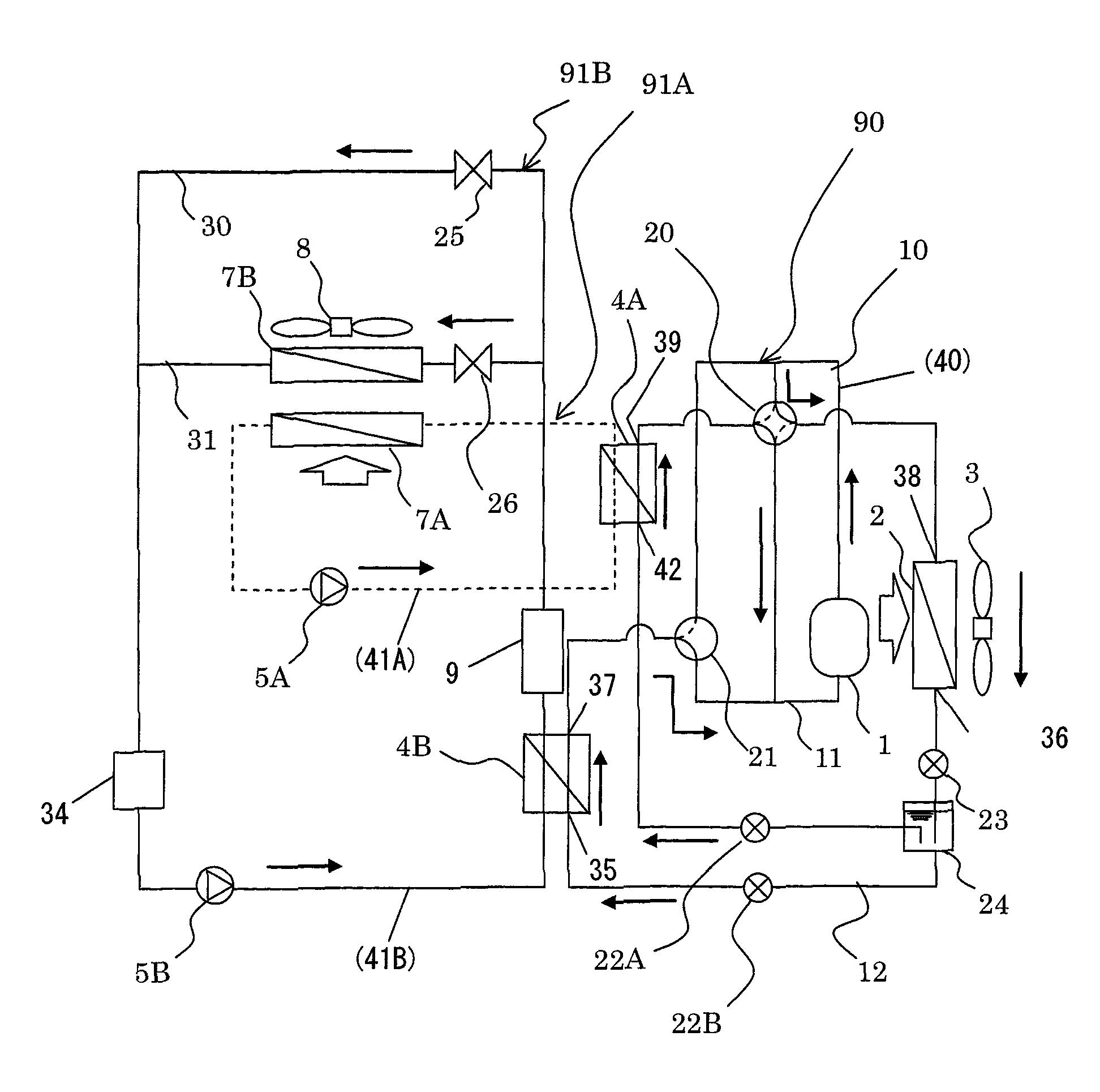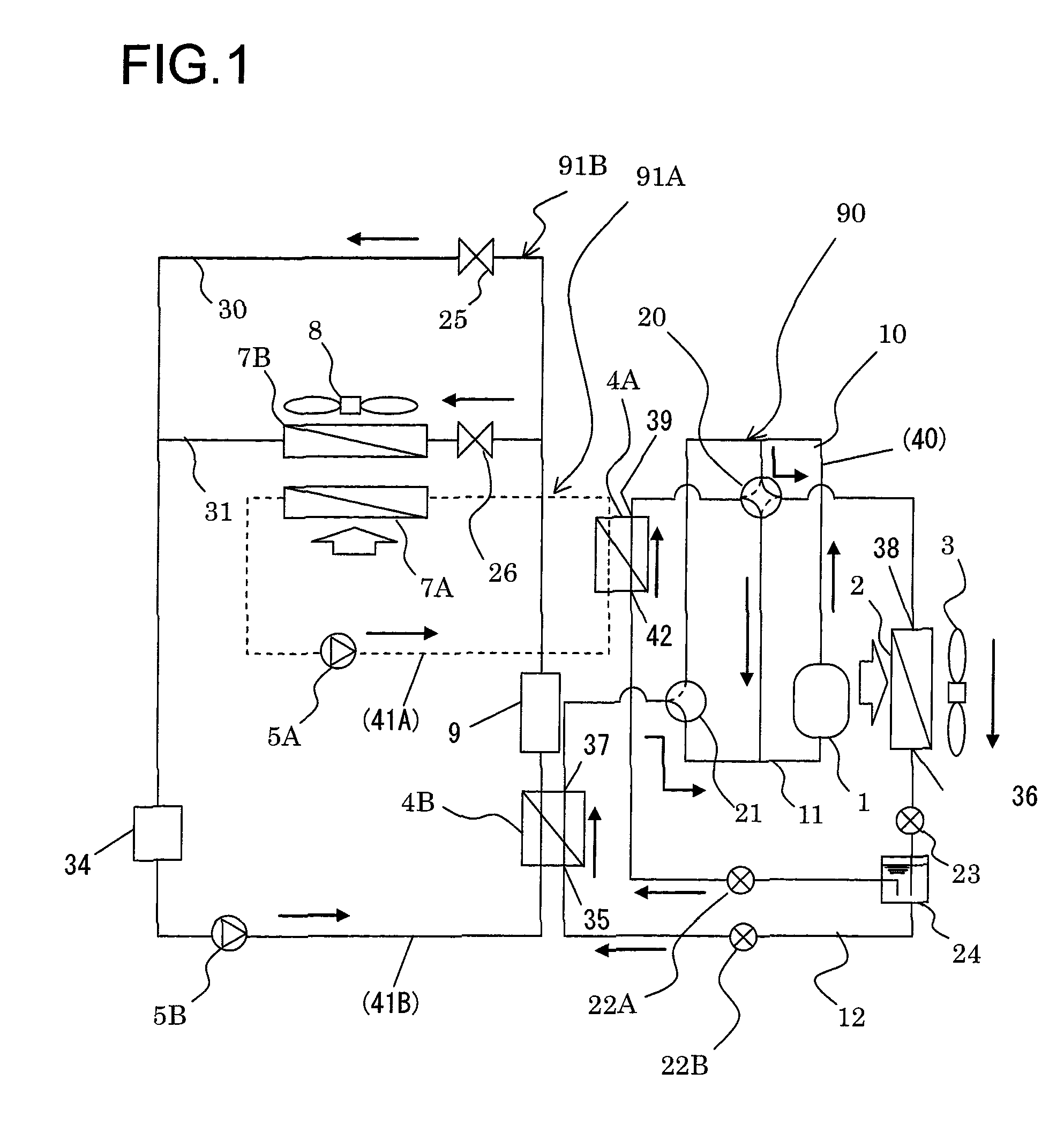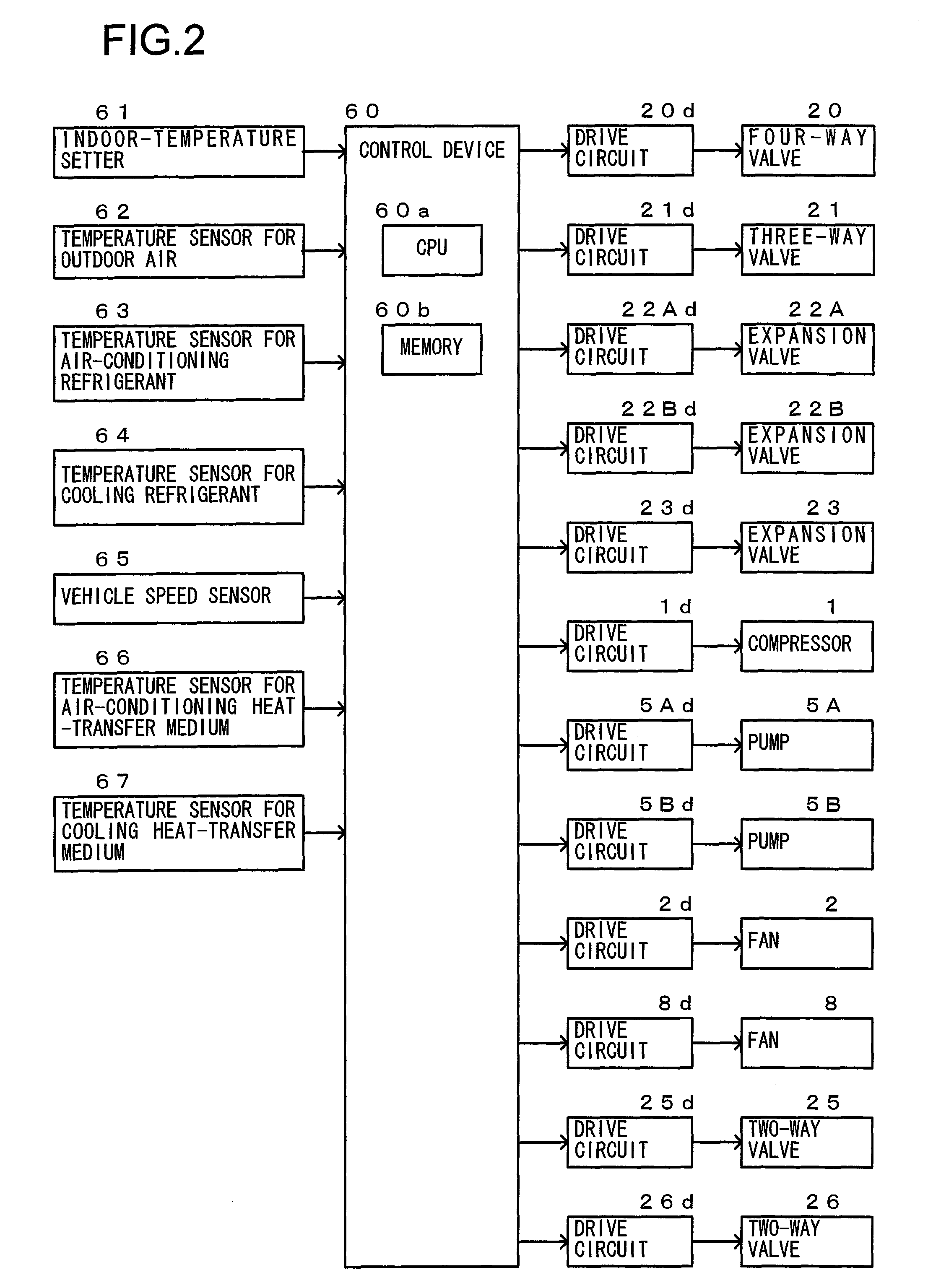Vehicle air-conditioning apparatus
a technology for air conditioning apparatus and vehicles, which is applied in the direction of lighting and heating apparatus, domestic cooling apparatus, defrosting, etc., can solve the problems of increasing the inability to set the temperature of the heat transfer medium, and the increase of the power consumption of the primary circulation channel of the heat pump, so as to achieve the effect of minimizing the power consumption of the refrigeration cycle system
- Summary
- Abstract
- Description
- Claims
- Application Information
AI Technical Summary
Benefits of technology
Problems solved by technology
Method used
Image
Examples
first embodiment
[0045]FIG. 1 presents a schematic diagram showing a construction of a vehicle air-conditioning apparatus according to a first embodiment of the present invention. FIG. 2 presents a block diagram showing an electric circuit of a vehicle air-conditioning apparatus according to the first embodiment of the present invention. The vehicle air-conditioning apparatus 1 according to the first embodiment comprises three heat-transfer medium circulation channels. More particularly, a first one is a cooling medium (or refrigerant) circulation channel (or primary circulation channel) 90 of a refrigeration cycle system, which performs compression, condensation, expansion and evaporation of a refrigerant 40. A second one is a heat-transfer medium circulation channel for air-conditioning (hereafter, air-conditioning heat-transfer medium circulation channel) (or secondary circulation channel A) 91A, which is connected to the refrigerant circulation channel 90 of the refrigeration cycle system (herea...
second embodiment
[0106]FIG. 10 presents a schematic diagram showing a construction of a vehicle air-conditioning apparatus according to a second embodiment of the present invention. This diagram illustrates the flow of the refrigerant upon cooling operation. Apparatuses and components that are the same as or similar to those explained with reference to FIGS. 1 to 9 are given the same reference numbers and explanation thereon is focused on differences between the first and the second embodiments. In the second embodiment, the three-way valve 21 used in the first embodiment as shown in FIGS. 1 to 9 is not used and the outlet / inlet 37 of the cooling heat-exchanger 4B is connected to the intake pipe 11 of the compressor 1. An electric circuit according to the second embodiment is the same as the electric circuit used in the first embodiment as shown in FIG. 2 except that the three-way valve 21 and the drive circuit 21d are omitted. Therefore, illustration and explanation of the electric circuit is omitt...
third embodiment
Variations of Third Embodiment
[0113]The apparatus according to the third embodiment shown in FIG. 11 includes the radiator 50 in parallel to the indoor heat-exchanger 7B in the cooling heat-transfer medium circulation channel 91B. However, the radiator 50 may be provided in series to the indoor heat-exchanger 7B as shown in FIG. 13. By the addition of the radiator 50, that release to the outside air can be performed without resort to the refrigeration cycle system refrigerant circulation channel 90. For example, when the load of heating for heating the vehicle interior is decreased while the heating-heat releasing operation is performed, the amount of heat released to the vehicle interior is decreased so that heat release cannot be accomplished completely. In this case, the state of deficient capability of heat release can be solved by releasing heat to the outside air by means of the radiator 50. If there is yet a deficiency in the capability of heat release even when heat release ...
PUM
 Login to View More
Login to View More Abstract
Description
Claims
Application Information
 Login to View More
Login to View More - R&D
- Intellectual Property
- Life Sciences
- Materials
- Tech Scout
- Unparalleled Data Quality
- Higher Quality Content
- 60% Fewer Hallucinations
Browse by: Latest US Patents, China's latest patents, Technical Efficacy Thesaurus, Application Domain, Technology Topic, Popular Technical Reports.
© 2025 PatSnap. All rights reserved.Legal|Privacy policy|Modern Slavery Act Transparency Statement|Sitemap|About US| Contact US: help@patsnap.com



